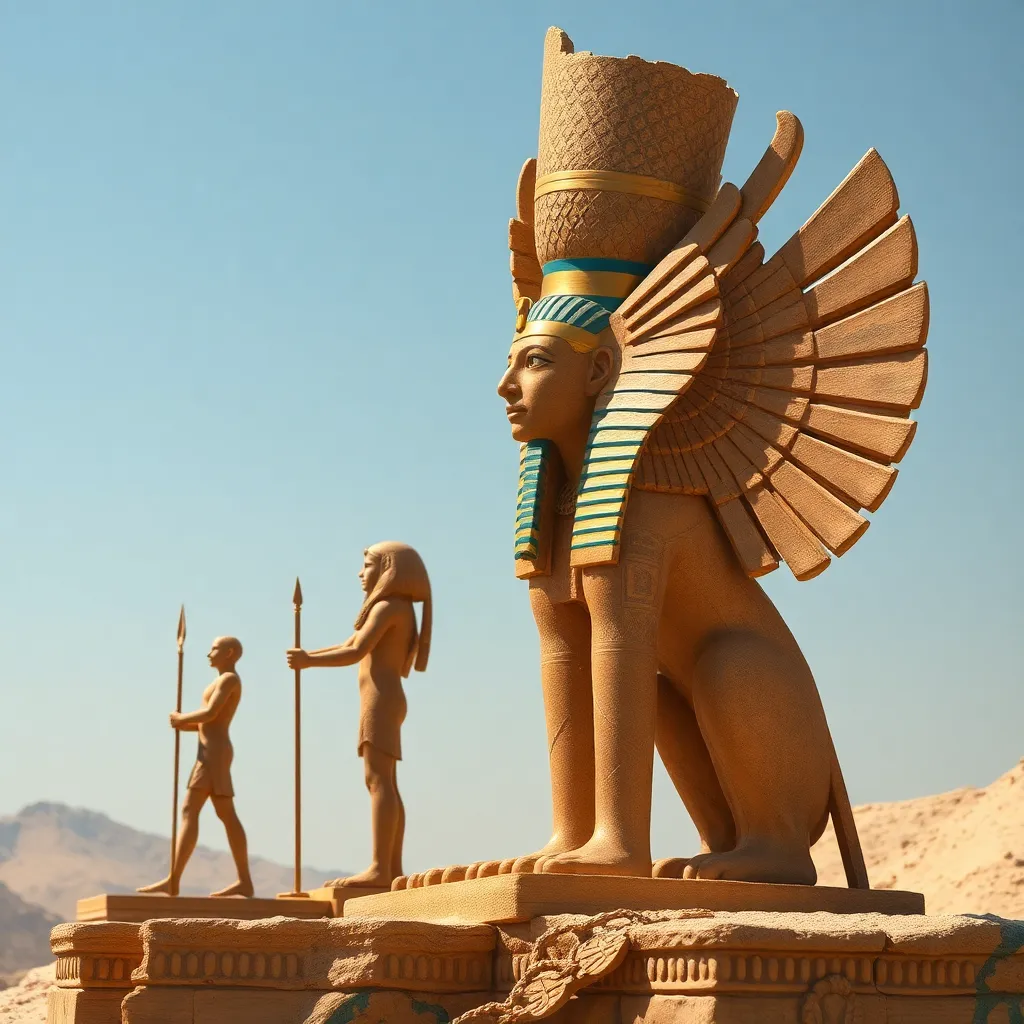The Legacy of Atenism: How It Shaped Ancient Egyptian Culture
I. Introduction
Atenism, a religious movement that flourished during the reign of Pharaoh Akhenaten in the 14th century BCE, is often regarded as a significant turning point in Ancient Egyptian religious practices. This monotheistic faith worshipped Aten, the sun disk, as the sole deity, diverging from the traditional polytheistic beliefs that had characterized Egyptian religion for millennia.
The historical context of Atenism is crucial for understanding its emergence and the transformative effects it had on Egyptian culture. This article aims to explore the origins and rise of Atenism, its artistic and religious impacts, the role of women during this period, its influence on future dynasties, and the ongoing scholarly debates surrounding its legacy.
II. The Rise of Atenism
Atenism originated under the reign of Pharaoh Akhenaten, who initially ruled as Amenhotep IV. In a radical departure from traditional Egyptian religion, Akhenaten promoted the worship of Aten as the only god. This shift was marked by the establishment of a new capital, Akhetaten (modern-day Amarna), dedicated to the sun disk.
The key beliefs and practices of Atenism included:
- The belief in Aten as the sole creator and sustainer of life.
- Rejection of the old pantheon of gods and goddesses.
- Emphasis on direct communion with the deity through personal prayer rather than through a priestly class.
This transition from traditional polytheism to monotheism had profound implications for Egyptian society, challenging established norms and religious practices that had persisted for centuries.
III. The Artistic Revolution
The Atenist period heralded a significant artistic revolution in ancient Egypt. Artists began to depict the world in more naturalistic styles, breaking away from the rigid conventions that had dominated prior periods. This change was influenced by the new religious focus on the Aten and the desire to illustrate the divine in a way that was more relatable and accessible.
New themes and styles emerged during this time, including:
- More realistic representations of the human figure.
- Intimate family scenes featuring Akhenaten, his wife Nefertiti, and their children.
- Innovative use of light and shadow to convey depth and emotion.
The impact of these artistic changes was long-lasting, influencing subsequent Egyptian art and culture. The naturalism of the Atenist period would resonate through later artistic expressions, creating a legacy that would endure for centuries.
IV. Religious Reforms and Their Impact
With the rise of Atenism, Akhenaten established the Aten cult, which included the construction of temples dedicated to the sun disk. This marked a significant shift in religious practices, as the old priesthood and temples dedicated to other gods were systematically dissolved. The traditional religious hierarchy was disrupted, leading to significant social and political ramifications.
The dissolution of the old priesthood resulted in:
- A concentration of power in the hands of the Pharaoh, who became the primary intermediary between the Aten and the people.
- Economic upheaval as the wealth associated with the temples was redirected to the Aten cult.
- Social unrest among those who were devoted to the traditional gods, leading to tensions within society.
V. The Role of Women in Atenism
During Akhenaten’s reign, the status of women saw a notable increase. Nefertiti, Akhenaten’s wife, was not only a prominent figure in religious practices but also played a crucial role in the governance of the kingdom. The representation of women in art and inscriptions from this period showcases their elevated status.
Key aspects of women’s roles in Atenism included:
- Queens and princesses were depicted with more prominence and agency in both religious and political contexts.
- Nefertiti was often portrayed alongside Akhenaten in scenes of worship, highlighting her importance as a co-regent.
- Women enjoyed greater freedom and influence in family and social structures during this time.
The lasting effects of these changes contributed to shifts in gender dynamics within Egyptian society, setting precedents for future generations.
VI. Atenism’s Influence on Future Dynasties
The reaction of subsequent rulers to Atenism was mixed. After Akhenaten’s death, there was a swift return to traditional polytheism, and many of his reforms were abandoned. However, the principles of Atenism did not vanish entirely; they were preserved and adapted in various ways.
Some notable influences include:
- The revival of sun worship in later dynasties, especially during the reign of Ramses II.
- Continued artistic influences that echoed the naturalistic styles first introduced during the Atenist period.
- The philosophical ideas surrounding monotheism that would later resonate with other religious movements.
The long-term effects of Atenism on Egypt’s religious landscape are evident, as its brief period of monotheism left a mark on the collective consciousness of the ancient Egyptians.
VII. Historical Interpretations and Debates
Scholarly perspectives on the significance of Atenism vary widely. Some historians view Akhenaten’s reforms as a revolutionary step toward religious monotheism, while others argue that it was an isolated and transient phenomenon.
Controversies surrounding Akhenaten’s legacy include:
- The interpretation of his intentions: Was he a genuine believer in Atenism, or was it a political maneuver?
- The extent to which his actions were accepted or resisted by the populace.
- The implications of his reign for the future of Egyptian religion and society.
Modern interpretations continue to explore the relevance of Atenism today, examining its impact on contemporary discussions about religion, governance, and societal structures.
VIII. Conclusion
Atenism had a profound impact on Ancient Egyptian culture, shaping religious practices, artistic expression, and social dynamics during its brief existence. The legacy of Akhenaten and the Aten cult is a fascinating chapter in the history of Egypt, reflecting both the potential for radical change and the resilience of tradition.
In reflecting upon the enduring legacy of Atenism, it becomes clear that studying this unique period provides valuable insights into the complexities of human belief systems and societal evolution. The importance of Atenism in the historical context cannot be overstated, as it invites us to consider the broader implications of religious reform and cultural transformation.




